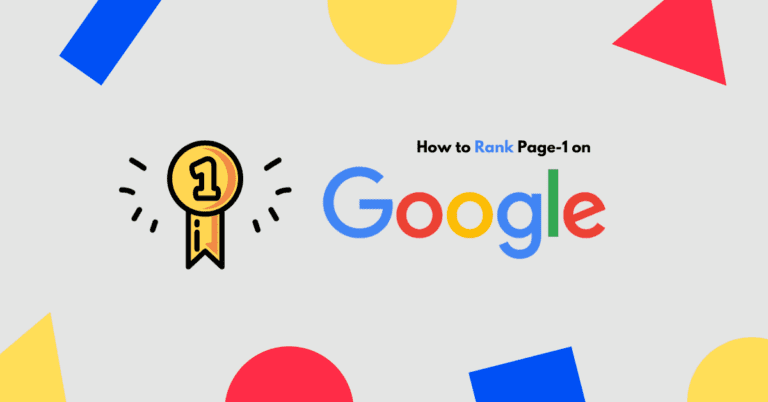8 Important Tips to Rank on Page 1 of Google in 2024
Ranking on the first page of Google can mean the difference between success and failure for any business, whether it’s a startup or an established company. Ranking on page two or beyond is almost as bad as not having a website for your online business.
Table of Contents
ToggleIf your website is anywhere past page one in the rankings, well, it might as well be completely invisible, because over 90% of users do not go past page one of the Google Search Results while searching for something.
Ranking higher on the top search engine in the world can drive more traffic to your website, increase your online presence, develop trust among your target audience, and build your brand’s credibility.
Everyone wants a top spot on Google. Sadly, it’s not as simple as it sounds. However, you can make it to the first page of Google – or even better, to the top spot of the first page – through a carefully considered and strategic approach.
Our guide will walk you through exactly how to rank on the first page of Google so that you can start reaping the benefits of ranking on top.
You May also Like:- 29+ Group buy SEO Tools in India (Just Rs. 149/-*)
Most Important Tips to Rank on Page 1 of Google
Here are some tips that will help you rank on the first page of Google search results.
#1. Focus On User/Search Intent and Ensure That Your Page Aligns With It
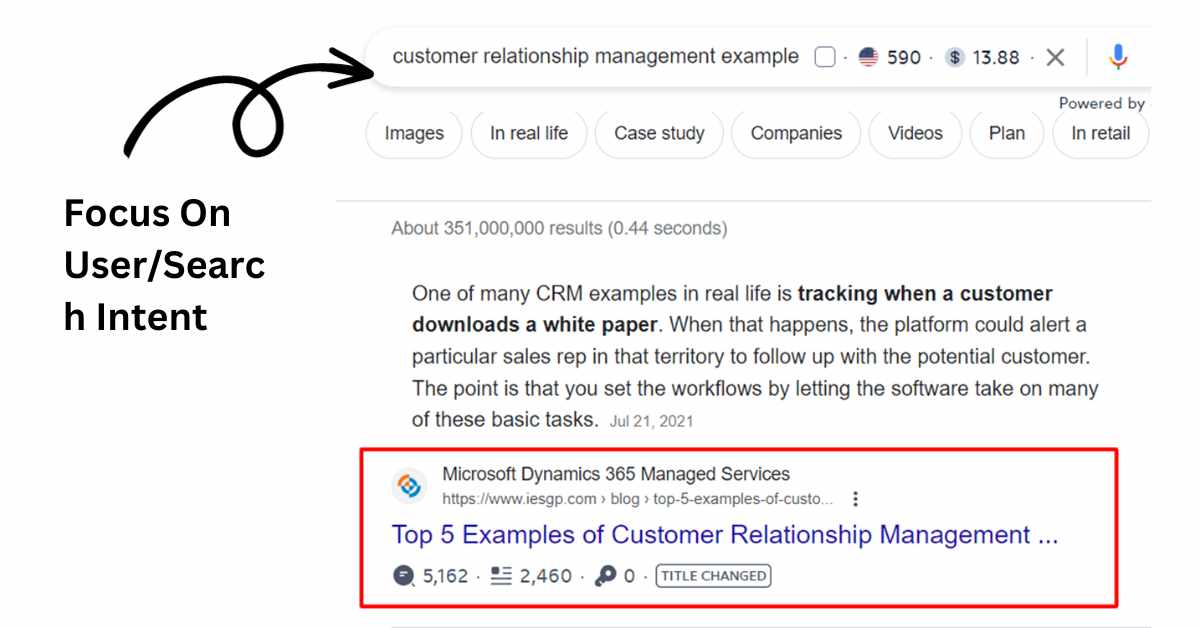
Your page should align with the searchers’ intent to display results that satisfy their underlying motivation or desire. While it may not be possible to say exactly what searchers are looking for, let’s help you get a better idea:
Content type- The most common types of content that you see on the first page are blog posts or articles, videos, product pages, category pages, and interactive tools.
Having a category page is an ideal choice if you are running an online store that sells clothes, since the majority of the online dress stores that you see on the first page of Google are all ecommerce category stores.
If your business offers specific services, you can go for blog posts or videos, since most service-oriented businesses that feature on the first page are either in the form of blogs or videos that explain their services.
You May also Like:- 9 Best GPL Websites for WordPress (Plugin Just Rs. 99/-)
Content format- Once you have determined the content type, you should decide which content format you need to use.
Listicles, reviews, opinion pieces, step-by-step tutorials, and comparisons are some formats that usually appear on the first page. If your page provides a list of services, listicles are your go-to option, for example, “10 Best House Cleaning Services in Los Angeles.”
If your page provides a solution to a query, you should go for step-by-step tutorials. For example, “How to Build a PC”
Content angle. What do we mean by “content angle”? Quantifying these can be challenging, but in general think of them as modifiers that might make a piece seem more relevant to searchers.
If you are looking to provide a list of the best house cleaning services in Los Angeles, you can include 2024 in the titles (Best House Cleaning Services in Los Angeles in 2024). Almost every listicle that appears on the first page includes the current year since searchers always look for fresh information.
For tutorials and guides, you can include the term “beginners” (Marketing Tips for Beginners) since most articles or tutorials, especially ones such as “tips”, “tricks”, and “strategies” are mainly aimed at individuals who are new to a specific industry or hobby.
You need to put yourself in your users’ shoes to get an understanding of the kind of searches they make, the search suggestions they get, the results that show up for a particular query, and the content type that ranks on top. Based on these details, you can categorize the search intent into four types.
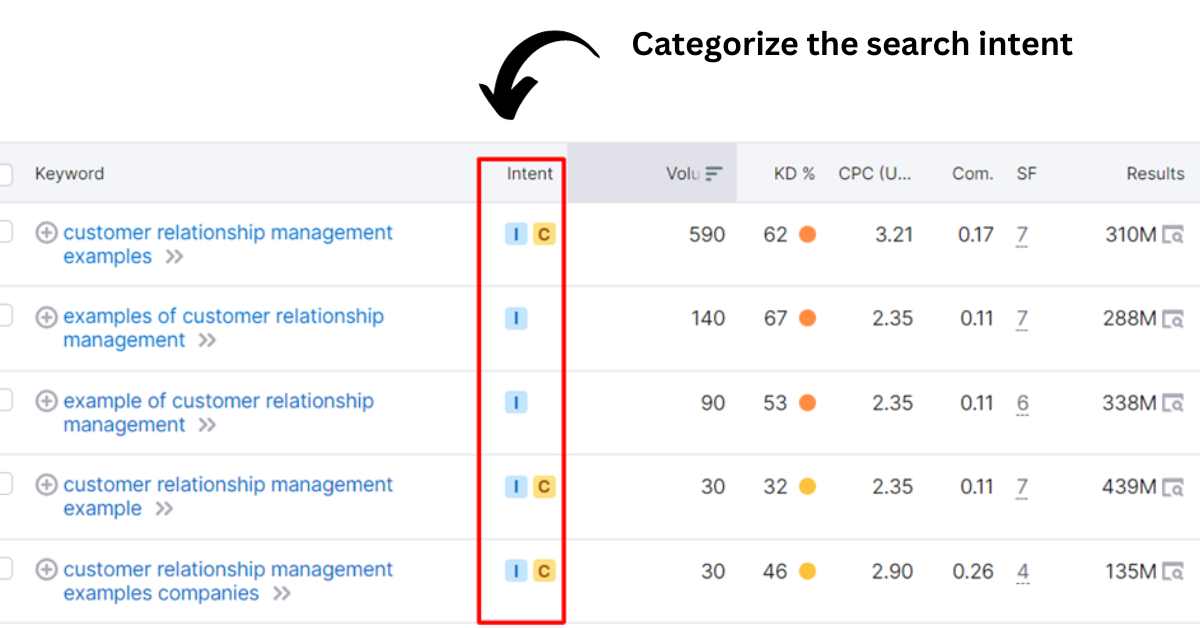
- Informational. A user is looking for specific information. “Who is the director of Breaking Bad?”
- Navigational. A user wants to go to a specific website where he or she logs in regularly. The user would prefer Googling it instead of typing the entire URL in the address bar. “Moz”, “Fiverr,” and so on.
- Transactional. A user wants to purchase something. “Apple AirPods (2nd Generation).”
- Commercial. A searcher wants to know more about a product or service to make a purchase decision. “Best stovetop cooking griddle reviews.”
You May also Like:- 15+ Best Etsy SEO Tools Providers to Boost Sales (Free & Paid)
#2. Identify the Right Keywords That You Need to Target
What are the right keywords? The right keywords are ones that best describe your product, service, brand, content, or something else that users may type in the search bar while looking for things that are related to what you offer.
If the word or phrase typed by a user in the search box exactly matches the terms you have used as keywords on your website, your page will be displayed in the search results.
If you are running an online store that sells sports shoes, you will definitely want customers looking for sports shoes to click on your website. You need to make sure that the keyword “sports shoes” is incorporated throughout your blog and web pages.
By doing this, you are telling Google that your website is the leading authority in providing the right answers regarding your chosen keywords that users are searching for.
You should not just blindly sprinkle the keywords throughout your content. Remember, the ultimate aim is to create content that is informative, interesting, and educational.
So, you need to keep in mind that the keywords that are added must be relevant to your topic. Keyword research is the key to finding the right (relevant) keywords. Ahrefs, SEMrush, and so on are some tools that will help you find the right keywords.
You should not just use the keywords within the text. It is important to use the relevant keywords in the subheadings as well. Incorporating the right keywords in the first paragraph is crucial and considered a good practice.
The above-mentioned steps will boost your website’s visibility, increasing its chances of ranking on the first page of Google while also helping your website stand out from your competitors.
You May also Like:- 11 Best Email Marketing Books: You Need to Read
#3. Analyze Your Competitors to Understand the Competitive Landscape
Are you still not getting the desired results even after doing everything right? If yes, then it can be really frustrating. You need to first understand an important point.
Most of the customers make a purchase decision based on the comfort factor. If they have been purchasing from a brand for many years, they would prefer sticking to that even if something better comes up.
If you are in the business of selling sports shoes and if you type “sports shoes” in Google, then in all likelihood, you will find big, well-known brands in the result such as “Adidas”, “Puma”, or “Nike.” If you are up against such big names, it can be very difficult to get to the first page, because people usually prefer buying sports shoes or any other product for that matter from well-established brands.
Competitor keyword analysis and research will help you identify the keywords your competitors are using in their organic search and paid campaigns.
Once you get this valuable information (the keywords that your competitors are targeting), you can use these keywords more effectively. This will help you outdo your competitors and rank ahead of them.
#4. Include Quality Backlinks to Enhance Your Page’s Authority
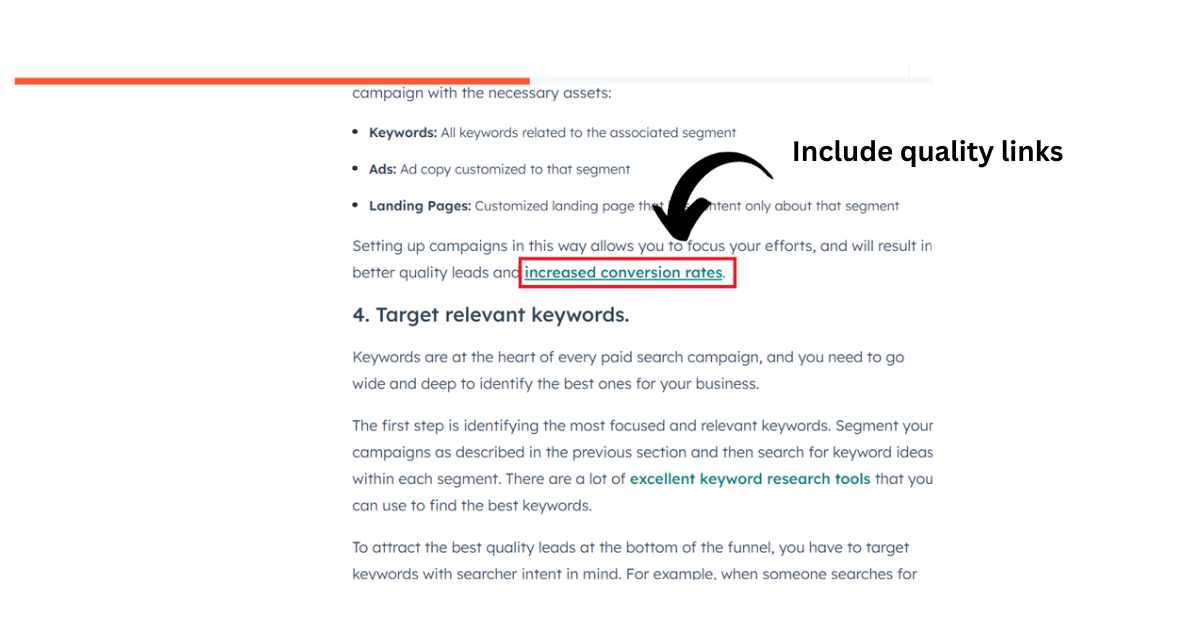
Backlinks represent another website’s traffic coming to your own website. Backlinks from websites that have a higher domain authority (DA) can help your site rank higher in search engines as it indicates to Google that another resource (reputable site) finds your content to be good enough to link to it from within their own content.
Backlinks, which are also referred to as inbound links, are one of the most powerful ranking factors as they signal Google and other search engines that your content has value. Backlinks will not only provide additional value to readers but they will also support a claim made in the content and add authenticity.
You should not ignore this step and start working on it right away by identifying similar websites and asking them to link to a content piece on your website. You can send them a request through email.
You May also Like:- 25+ Best PLR Websites to Make Money: Buy High Quality Products
#5. Regularly Perform Content Audits and Review Your Data
Achieving a solid presence on the first page of Google’s search results is an ongoing effort. Google’s algorithms evolve continuously, and social trends, best practices, and competition are constantly changing. To maintain your position, your content must adapt and evolve accordingly.
Conducting regular content audits is an effective strategy for addressing this challenge. Utilize essential tools like Google Search Console to assess your top-performing content, preferably every three months, to ensure its continued relevance. Implement necessary content refreshes and updates to ensure that your best content remains at the forefront.
You can use the search analytics function to track the various search queries that are directing users to your website, along with the additional metrics associated with your site visits.
When you notice a specific long-tail keyword receiving a significant number of impressions but not generating a correspondingly high clickthrough rate, it suggests that your title tag and meta description might require some optimization.
#6. Aim to Optimize for Google SERP Features
Beyond the typical set of search result links, you have the opportunity to delve into various search engine results pages (SERP) features, such as rich snippets, knowledge panels, and the “people also ask” sections.
These features provide your content with multiple opportunities to rank effectively and capture the attention of those seeking information. It’s valuable to learn how to optimize for each one.
For example, you can optimize for featured snippets by providing direct and concise answers to common questions that searchers are likely to have.
Incorporating structured data markup into your website can enhance your chances of obtaining an eye-catching rich snippet, while applying appropriate alt tags and captions to images can help secure a position in a Google image pack.
You May also Like:- On-Page SEO in 53 Steps: The Complete Guide
#7. Optimize Your Page for Mobile Devices (Make it Google Mobile-Friendly)
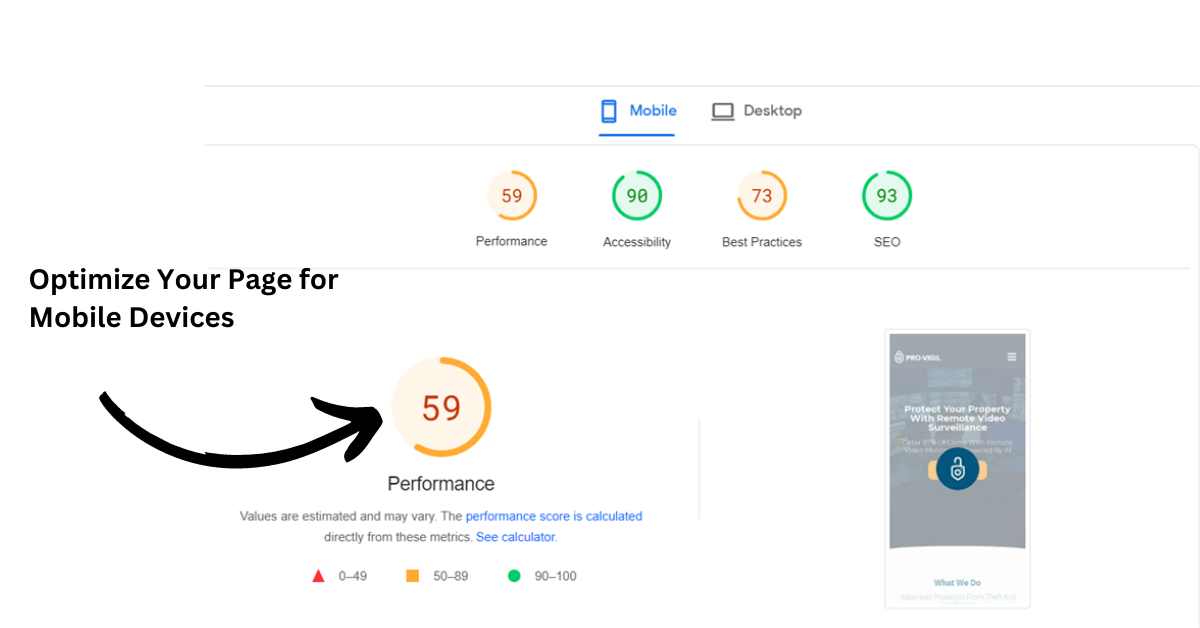
To secure a position on the first page of Google, it’s essential to optimize your web pages for mobile devices. Mobile optimization is a key factor in search engine rankings and ensures that your site is user-friendly and accessible on smartphones and tablets.
Google places significant importance on mobile-friendliness as a ranking factor because of the growing number of users who access the internet through mobile devices. Websites that are optimized for mobile provide a better user experience, and Google rewards such sites with higher search rankings. Therefore, if you want your website to appear on the coveted first page of Google’s search results, optimizing your web pages for mobile is a critical step.
#8. Create High-Quality Content
Content remains the primary factor for achieving top SERP rankings on Google, and its significance has only grown over time.
Google’s search algorithms are designed to deliver the best possible results to users. They assess the relevance and quality of web pages to determine their ranking in search results.
Creating top-quality content means producing informative, engaging, and well-researched material that genuinely addresses the needs and interests of your target audience.
By offering valuable content, you increase the likelihood of gaining higher visibility in Google’s search results, which often results in landing on the first page. This strategy not only attracts more organic traffic but also builds trust and credibility with your audience, making it a core element of effective search engine optimization (SEO) practices.
Capture Google’s interest by creating substantial long-form content that delves deeply into subjects your audience is passionate about, providing comprehensive answers to their frequently asked questions. Aim for a word count between 1,500 and 2,000 words for optimal results.
Enhance the readability and structure of your content by employing headings and subheadings. Integrate relevant keywords and valuable links seamlessly and organically.
Other Important Tips to Rank on Page 1 of Google
- Add featured snippets to appear above the traditional #1 spot – aim for position #0.
- Rank better for searches with local intent by registering on Google My Business.
- Make your content more engaging by adding captivating visuals. Since regular search results are becoming more visual, your visibility could improve significantly if your images rank in image results.
- Use meta tags well as they give you an opportunity to provide a short intro (up to 120 characters) about your content to help your users gain a good understanding of what you offer.
You May also Like:- Off-Page SEO Beginner’s Guide: 9 Proven Techniques You must Use
Google March 2024 Core Update
Google Recently Annouce a Major update for Websites. Google will collectively reduce low-quality, unoriginal content in search results by 40%.
This March core update will have multiple updates within it, since this update touched on several systems within the core update, Google will push out updates to those systems over the coming weeks. so, there will be more fluctuations in rankings so, don’t make any mistakes.
This update includes algorithm changes to improve the quality of search results and reduce spam.
Trapped or Safe?
Type “site:website.com” on Google and press enter, if you are showing…SAFE!
Now, Go to Google Search Console and on the left sidebar click on the option “Security and Manuel Actios”, Check the issue.
Google is doing its job what can you do?
Delete that content which is on Radar, Like AI Written content or unvaluable third-party post.
Be the Google’s Buddy and try to solve your web vitals issues.
Update your content with recent and fresh information.
Be active on your site normally, Don’t show your clever skills.
10 Hacks We should Avoid in SEO?
As you know after Google’s march update, most of the sites are getting penalized and traffic sinks. So Avoid it:-
- Keyword Stuffing- Avoid excessively repeating keywords unnaturally.
- Cloaking- Don’t deliver different content to search engines than users.
- Buying Links- Avoid participating in link schemes or buying links.
- Duplicating Content- Avoid having identical or near-duplicate content across pages/sites.
- Neglecting Mobile Optimization- Optimize for mobile users to maintain search visibility.
- Ignoring User Experience- Prioritize factors like site speed, navigation, and usability.
- Over-Optimization- Avoid going overboard with tactics like excessive keyword usage.
- Black Hat Tactics- Stay away from deceptive practices designed to manipulate search engines.
- Neglecting Technical SEO- Don’t overlook technical aspects like crawlability, indexability, and site architecture.
- Ignoring Analytics and Monitoring- Track and analyze website performance and user behavior.
- Don’t Publish AI Content- Publishing AI content will hurt your site’s ranking.
Conclusion
Ranking on page one of Google may be a tedious task but definitely not impossible. It requires a systematic approach to keyword research and producing top-quality content that makes users see you as someone whom they can rely on whenever they have some queries related to your industry.
You should provide fresh content and update older ones regularly so that people find them to be valuable and relevant. This will ensure that they will keep coming back for more.

